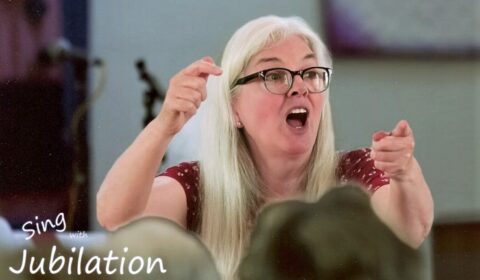‘JARDINE PIANO’ NEXT GENERATION OF GRAND MUSIC AT OPERA HOUSE
Mark Clairmont | MuskokaTODAY.com
GRAVENHURST — When Louise Jardine walks onto the Opera House stage tonight to conduct the Elderberries Choir in their 30th anniversary performance, they will be accompanied by Carolyn Grant on their small electric Yamaha keyboard.
The music director would like to have seen and heard their pianist playing the “Jardine piano,” a seven-foot Heintzman her family recently donated to the Opera House.
Alas it’s not tuned and or ready for Friday’s 7:30 p.m. performance of “Sing With Jubilation” by the 65-member chorus.
Jardine would have loved that; so would her late parents for whom it was part of a love story for the Toronto “high school sweethearts.”
Their piano is a replacement for the larger nine-foot Steinway that has graced the Gravenhurst concert hall since shortly after the Second World War. And due to its 112-year-old age the grand lady was deemed by the town not to be playable and is being auctioned off.
When George and Margaret Jardine wed in 1959 he promised to buy her a grand piano. Twenty years later he finally made good on his second sacred vow. Margaret was a kindergarten teacher in Etobicoke for 37 years. And in those days you had to play the piano for your job.
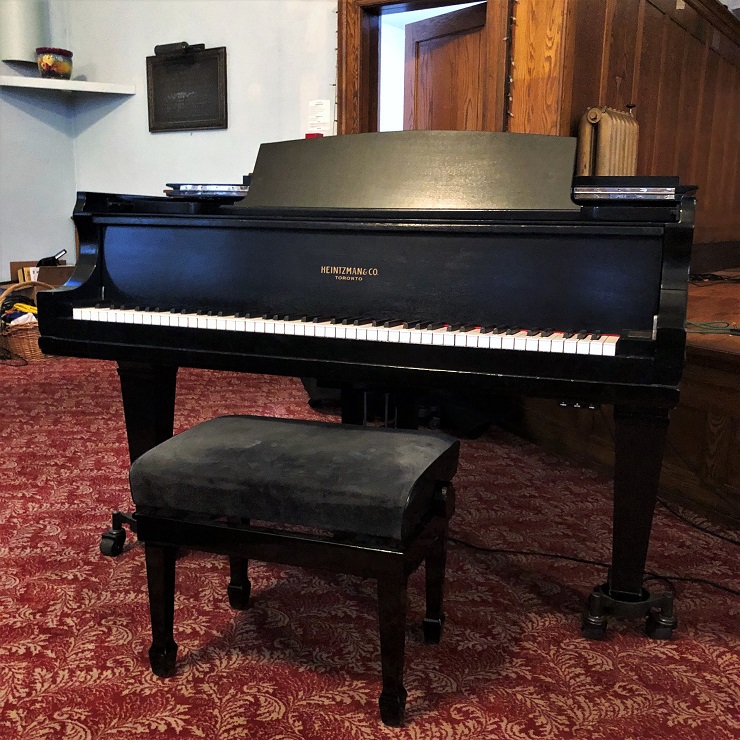
Louise Jardine and her sister grew up playing that 1921 piano with their mother. Their father played percussion and violin and was in the York Symphony.
The family had a cottage on Severn River, near where Jardine now lives on the Green River with husband Dr. Chris Sander. She is retired from the Toronto District School Board, where she was a music events facilitator after earning her BA from at York University with further study in choir and piano at Western University. She followed that with a career as a vocal and choral director.
As choir director of the Etobicoke Children’s Choir she took them to Carnegie Hall as part of a mass choir with the Toronto Children’s Choir of which she was an alumnus.
For this past six years she’s “thrilled” to be director of the Elderberries after moving north in 2016.
In the late 1990s George and Margaret Jardine “lent” their piano to the Windermere United Church. In April 2020 Margaret died; her husband joining her two-and-a-half years later.
Recently when the church closed — after the congregation merged with another church — the “Jardine piano” was about to be homeless.
That’s when serendipitously she heard the Opera House was going to soon be in need of a replacement piano and she contacted manager Kelly Hamilton to offer the recently rebuilt Jardine piano.
Together they’re making new music at the Opera House.
See TODAY.com’s story here on how the need came about.
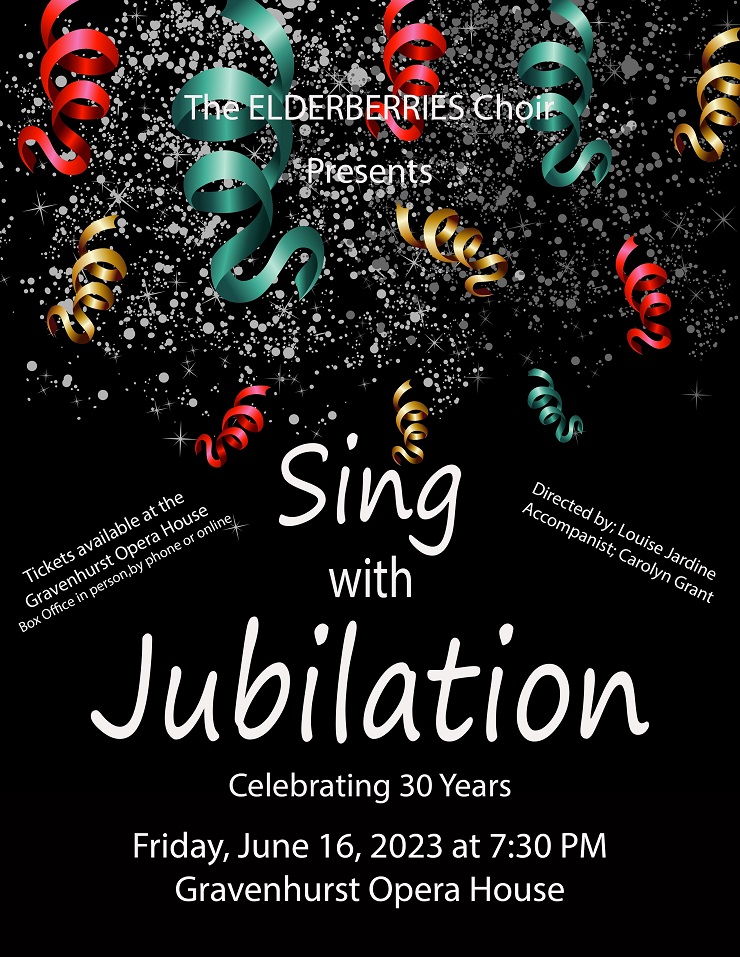
‘Problematic’ history of piano: neglect or abuse?
“She’s performed well since 1949,” said Hamilton, of the venerable Steinway that had served the community for 74 years and had been played by some of the world’s top pianists and less discerning local talents.
But ….
Hamilton told the Rotary Club, who bought and donated the 1911 grand in 1949, that the town has grappled with it keeping it going for decades and had recent cost estimates of $60,000 to refurbish it.
To some it was apparent the wear and tear of its century-old age was not only being seen but heard, after dozens of great artists had managed to massage and coax beautiful music of it and rockers have pound it to near death.
Pianist Kyung-A Lee is new to the area and to the piano. But has played it in concert. As an extremely accomplished concert pianist schooled in South Korea — and living now in Port Sydney — she has thrilled and amazed Muskoka musicians and audiences with her immense classical talent and skill sitting before it and doing wonders with it’s sound.
Asked her opinion of the Steinway, she was nonetheless frank in her assessment.
“If you’d allow me to be completely honest, I have rather strong concerns about the Steinway at the Gravenhurst Opera House from my performance experience.
“It is very evident that the age of the piano and lack of regular maintenance has affected the sound quality and mechanical issues. The cosmetic scratches and broken keyboard keys are very minor; however the mechanism requires a full restoration in my opinion.
“My biggest issue with the piano was the insufficient sound projection. It was close to impossible to project rich resonant sound, and was very difficult to deliver my desired volume and presence required for an acoustic performance experience in the beautiful Gravenhurst Opera House. This could mean a problem in the soundboard.
“These issues on the Steinway have stopped me from seeking performance opportunities at that specific venue.”
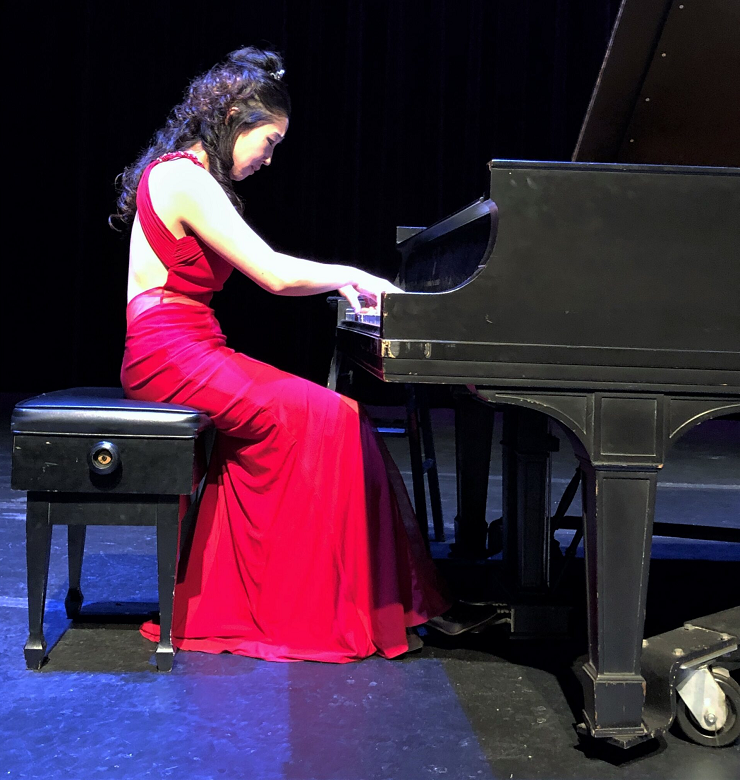
Dan McCoy, who was the music minister at Trinity United Church and who grew up in Gravenhurst to also become a very fine pianist and teacher, says “I played it at the Wanda Miller talent show there in the 1990s and gave recitals on it in prep for my Royal Conservatory exams. I remember the keys hurting the fingers as they were sharp-edged somehow.
“But I can’t comment on the overall sound,” says the piano teacher at Long & McQuade and who lives in Barrie now.
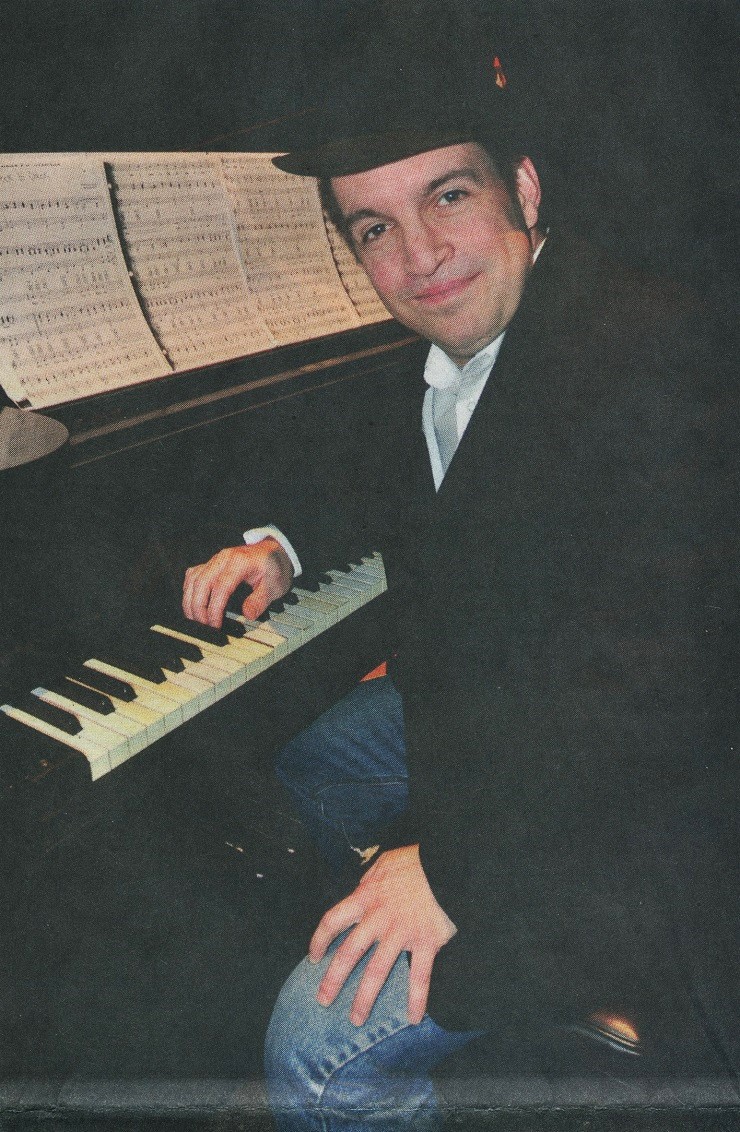
Hutton ‘great fan’ of piano he ‘made friends with’
Bala’s Jack Hutton, who is most well-known to local audiences has played the Steinway in concert numerous times, was more kind and understanding of the unique constraints of the instrument.
“Indeed, I loved it. “I found it a privilege every time I played it,” he said last week, noting he has brought a number of the best jazz and ragtime artists to play on it with him and his groups. Including Dick Hyman from New York and Colm O’Brien who travelled here from Ireland 10 years in a row for St. Patrick’s Day performances with Hutton and all-star line-ups.
Canadian jazz great Diana Krall has also played it to rave reviews when she was part of a Taboo Resort series in the 199s put on by theatre impresario Garth Drabinsky.
But Hutton admitted that later in its life the piano’s “been a controversial one.”
“It caused headlines” in 1986 when Anton Kuerti “a very fine classical pianist gave it a tongue lashing” and refused to finish his concert.
Halfway through his anticipated performance — and after “fiddling around with it — he got to the microphone and said ‘ladies and gentlemen I intended to finish this evening with Moonlight Sonata by Beethoven, but,’ he said, ‘I refuse to play it because I will not play it on this piano.’
“Oh there was a tremendous reaction. There were editorials in the paper. All sorts of people writing in and defending the piano. And others also giving it a tongue-lashing.”
Hutton said “visiting pianists like Mimi Blais, another very, very fine classical pianist with iron fingers, found it rough to play because the action. It takes a lot of strength to play that piano.”
Hutton is playing his final Opera House concert “With Friends” Friday Aug. 11. “It’s going to be fantastic night.”
He remembers Hyman, who at 97, is “still one of the top jazz pianists and one of the top guys in the world. He came and spent a whole day hammering the piano and doing all kinds of exercises on it.
“And after four hours he declared that he and the piano ‘had become friends.’ He was a great fan of it. He said you had to play it carefully. And he did.
“I made friends with it very early on. I played a couple of times with Paul Brodie and we had great fun with it.”
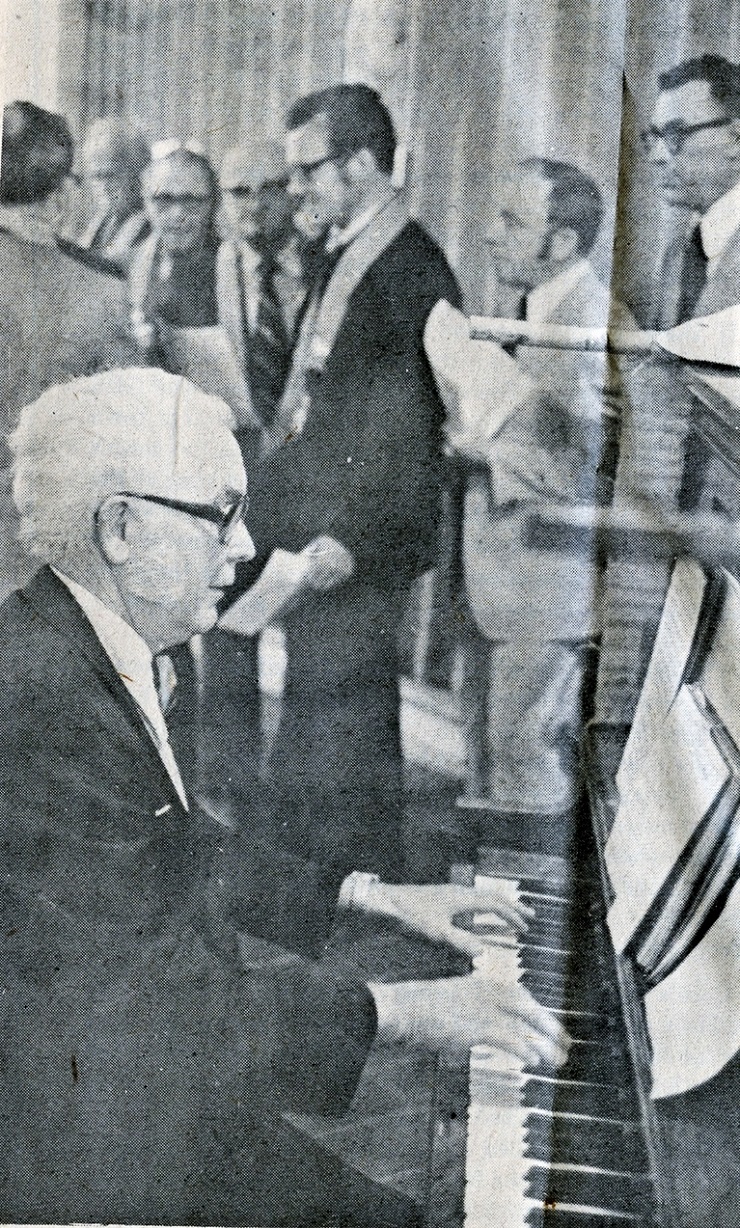
Hutton said Rotarian Gordon Sloan, also an especially fine pianist and United Church choir director who could have been a concert pianist, “went down and personally chose it.
“I think we should all be very grateful to him. Because he chose a wonderful, wonderful instrument.
“I know there have been people who complain about it this way or that. But in my opinion it is one of the best pianos we have had in Muskoka over all the years. But the only thing is it does have is a tough action, which some of the finest classical pianists who have came through found that they were exhausted at the end of the evening.
“But I never found that. I think I must have played 20 concerts there over the years. I’m a great fan of that piano.”
Hutton recalls one concert, to buy the special piano bench, with Ruth Ma and with the late Cyril Fry, who started the Muskoka Concert Association in 1949. Fry coined the phrase ‘Let’s put a shine on the Stein.’ And that became the slogan for the fundraising campaign.”
Hutton says into its eighth decades “it’s filled its role very well.”
He now plays an extremely fine baby grand Sundays at Zion Presbyterian Church in Torrance, which he finds a “delight to play.” That is when he isn’t playing his own electric Yamaha piano on Segwun and Wenonah II cruises each summer with the Muskoka Fleet. He’s going to play for the re-launch of the electrified Wanda III later this summer.
“I’m the only piano player who has ever played on the Wanda III, so I feel very honoured.”
No longer a ‘pleasure’ to play, says Sullivan
Former respected Huntsville piano tuner and builder Tim Sullivan knows the Steinway well; probably better than most having tuned it for more than 20 years starting in the early 1990s.
“It’s functional, but it’s not a pleasure. I’ve performed on it a number of times in concerts. It’s not that nice of an instrument to play. I can think of hundreds of better ones in Muskoka.”
Sullivan lives in Timmins now, having moved after COVID killed his business, he said in a call last week.
“I’m extremely competent and I pointed out the problems” to then manager Fred Schulz early on when he first began tuning the Steinway in the early 1990s.
“I knew what was wrong with it and we sorted out some of the technical problems.”
Sullivan had succeeded Donna Brock, who gave him the “lowdown” on the piano; and George Donovan who tuned it for Kuerti, the famed Austrian pianist who offered the audience “free tickets to his next concert” after refusing to continue playing the piano that dark night.
But before that infamous concert the Steinway had been rebuilt and Sullivan said it was “functional” work done that was “reasonable for the time. But it still had a lot of problems.”
Sullivan said big pianos deteriorate more than small ones and he “took it on the chin to keep it working.”
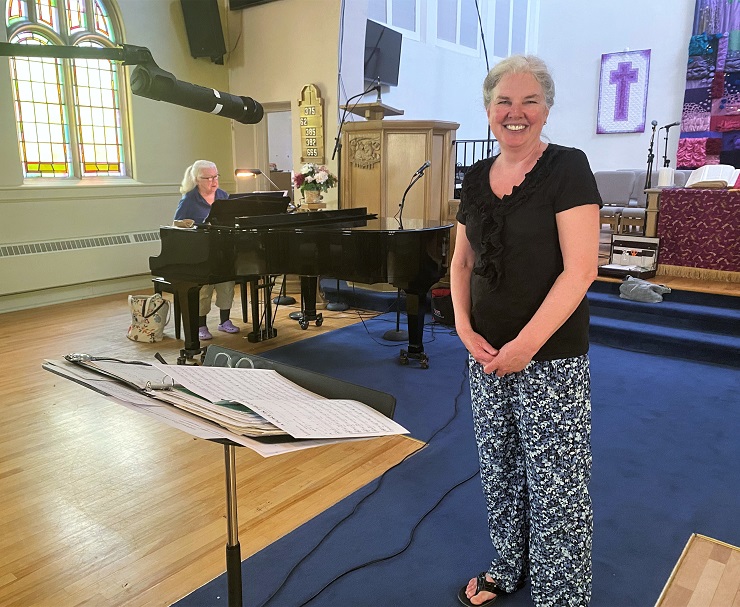
Sometime after 2010 then manager Ross Carlin sent it to Toronto for an overhaul.
“And when it came back it was unplayable and untuneable,” Sullivan said with a sigh. “The person who did the work just didn’t know what they were doing. It was a disaster.”
Then Sullivan went to tune it for Canadian contralto great Maureen Forester.
“I went in and the piano was not playable. I had to do a tremendous amount of work on it to get it to function. Days and days of work. A brand new bass string broke on it. The strings were not installed properly. The tinblock wasn’t installed properly. The piano needed a new sound board and new bridges. But the originals were kept. The keys were just a mess. And the action didn’t work also. So I had to scramble to get the piano working properly, including a new bass string, because they’re custom-made. All just for Maureen Forrester’s first concert. But there was still a lot of work to be done.
“And then (Carlin) got the guys back up, the guys who did the original work. About a day’s work. At this point, what do you expect from me. I wasn’t consulted or informed that this work was going to happen. I could have done a far, far, far better job on the work. And instead he sent it to Toronto (in the first place) for some reason. It came back worse than it was.”
Despite that Sullivan still wanted to continue to be the Opera House tuner, as it had a “certain amount of prestige.” As well he was the tuner for the Orillia Opera House, the Rene Caisse Theatre in Bracebridge, the Algonquin Theatre in Huntsville, the Stockey Centre in Parry Sound and theatres in North Bay and Haliburton.
“I was the concert tuner in all of the area in Central Ontario. I like going to the concerts and meeting the artists and working with them” — and dealing with the challenges.
Years later Schulz returned as manager and they “got it acceptable to the point where people weren’t complaining. But my first time I tuned that piano I told him it should be either rebuilt properly or replaced.
“To build a Steinway ‘D’ (concert grand) takes a great amount of expertise. And there are only a few people in Canada who can do that.”
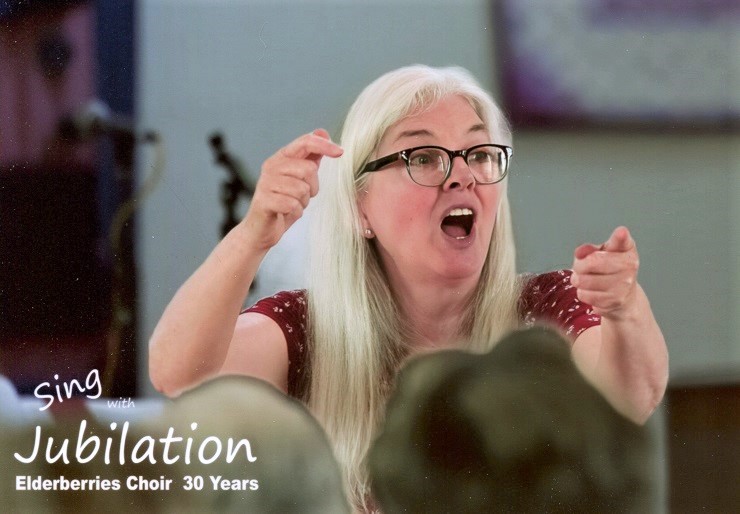
Schulz came back to the job a second or third time and “things went smoothly for a little while.” Then Sullivan realized “it’s never going to happen, they’re never going to replace the instrument or rebuild it. There’s too much money and politics gone into it. So I just went along with it. I never really pushed for the replacement. Although I did suggest it highly. I even suggested bringing in a better piano for a few concerts when you could rent one.
“As a piano player you rarely get to play your own piano and you have to be flexible.”
Positioning of the piano on the stage can make a huge difference in its sound and projection, as Lee said; and current sound and light technician Martin Green says now.
“It’s not so much the tuning as the placement,” says Sullivan. “It’s got to be really precise, not too far upstage (at the back) or the sound gets eaten.”
Regardless, Sullivan is no big fan of the Opera House sound anyway. He calls it a “myth” that “bugs me” that people brag the hall has the “greatest acoustics.”
He says it has “terrible acoustics.” And that his brother — who plays with the Pittsburgh symphony and is a “world-class” trombonist performing in all the greatest theatres including Carnegie Hall dozens of times — agrees with him. Sullivan said during one of his tuning sessions his brother pulled out his ’bone. After playing a few tunes he declared: “Man, this room is dead.”
Sullivan said he left tuning the Steinway for a few years and it became further “neglected.”
But he came back when Krista Storey arrived as manager from the Orillia Opera House.
“And by that point it had highly deteriorated. She was not functioning well at all. And eventually I just complained so much they stopped using me. Which I was happy about. Because there was nothing more to do but replace the instrument at that point.
“It should have been replaced with a new Steinway” instead of looking at $60,000 to refurbish it. “That’s a lot of money. But I’m not surprised.
Trinity United Church has a good Yamaha ‘C3,’ which Sullivan tuned for many years and is drawing away business.
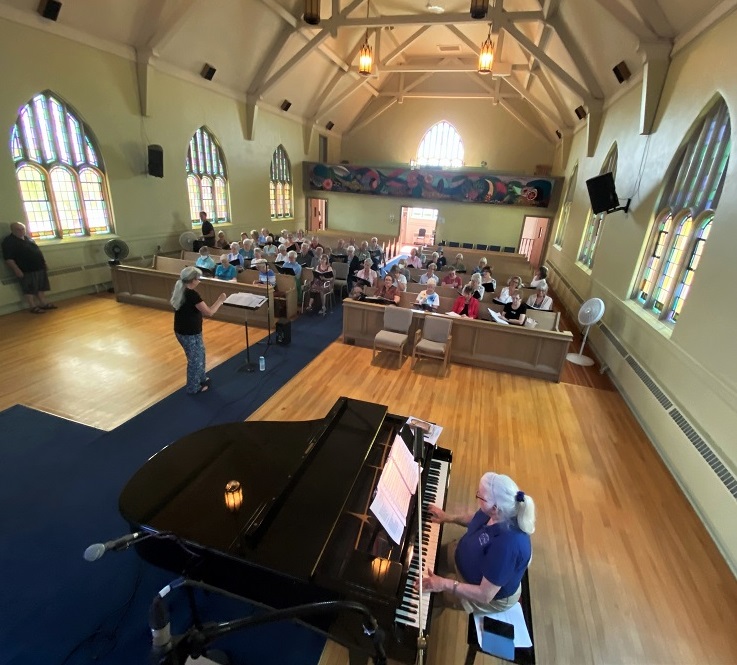
“The only thing salvageable on (the Steinway) would be the case (the box and the cast iron frame). The two major components, like the foundation of a house.”
He said now the whole thing would have to be “remanufactured — not just refurbished.”
Sullivan suggests a new Steinway ‘D’ today would cost about $250,000. Had it been replaced a decade ago when he left, he estimates it would have cost half today’s repair cost at $30,000.
Even the ivory on the keys were “highly deteriorating, cracking and splitting and breaking and falling off. But they refused — they refused — to do a key top job ‘because we can’t replace with ivory anymore, we’d have to use plastic.’
“Every piano made today is made with plastic key tops. It’s not that big a sacrilege to remove the ivory from an old piano, especially given their condition. That was a joke to me. It was like 500 bucks. That should have been done in ’92.”
Sullivan said ultimately he is “disappointed that (the Steinway) is being replaced with an old instrument — rebuilt or not.
“I always warned against accepting a donating piano. Because you’re stuck with it. It’s your piano. You can’t replace it. Once there’s a usable instrument in the hall, people are going to say ‘why not use the one that’s there now?’ It’s what I’ve always advised.”

He said the theatres in Huntsville and Haliburton “did exactly as I told them to do and bought new ones, but none of the other theatres did. “Instead,” he said, “they accepted donated pianos or had some hack work on them or rebuild their piano. Instead of buying a new piano. Just invest.”
Today Sullivan suggests Gravenhurst could get “a very, very, very nice new piano — like a Yamaha — for under $100,000. ’Cause good pianos are very expensive.”
He thinks the Huntsville piano cost between $50,000 and $100,000 and the money was donated to buy it. “Don’t give me a piano, give me money, so I can get a decent piano. People are so cost conscious they can’t see the long-term.
“There are a lot of pianos out there — personal and professional. And a lot of people have them in their homes that are suitable for the concert stage.”
Like the a 10-year-old Steinway he was out tuning last week in Timmins, where he says there are a surprising number of pianos still in use by people who respect them for what they are and still want them tuned and maintained.
So what’s this Opera House Steinway ‘D’ concert piano worth in 2023 dollars?
“They’re what we call a rebuildable core. Maybe $5,000 or $6,000. It’s hard to say what something’s going to sell for. If there’s a wealthy, nostalgic person in Gravenhurst — who may want the piano to sit in their cottage — they may pay a hell of a lot more.”
The Steinway weighs 1,500 pounds and can be put in the elevator and taken downstairs, he maintains.
Meanwhile, the Elderberries who in 1996 had Sullivan tune the piano for Mills will be on the stage singing the joys no matter the piano that Grant plays.
Sullivan concluded recounting a humorous tale about how before Mills’s concert, that the pianist told him the Steinway still needed more tuning, which Sullivan was satisfied he had done.
After a dinner break Mills came back and on stage praised his work to the audience during the concert.
Funny thing was Sullivan said he hadn’t touched the piano.
Another piece of lore for the piano’s next chapter that should keep a shine on the Stein one way or the other.

EMAIL: news@muskokatoday.com
30th year of ‘Local Online Journalism’
Twitter: @muskokatoday, Facebook: mclairmont1
Leave comments at end of story
SUBSCRIBE for $25 by e-transferring to news@muskokatoday.com
Or go online to https://muskokatoday.com/subscriptions
